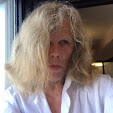
Scott Lord on the Silent Film of Greta Garbo, Mauritz Stiller, Victor Sjostrom as Victor Seastrom, John Brunius, Gustaf Molander - the Golden Age of Swedish Silent Film........Lost Films in Found Magazines: Victor Seastrom directing John Gilbert and Lon Chaney, the printed word offering clues to deteriorated celluloid, extratextual discourse illustrating how novels were adapted to the screen; the photoplay as a literature, a social phenomenon; how it was reviewed, audience reception.
Scott Lord on Silent Film

Gendered spectatorship notwithstanding, in a way, the girl coming down the stairs is symbolic of the lost film itself, the unattainable She, idealized beauty antiquated (albeit it being the beginning of Modernism), with the film detective catching a glimpse of the extratextural discourse of periodicals and publicity stills concerning Lost Films, Found Magazines
Sunday, October 5, 2025
Scott Lord Silent Film: Gosta Ekman in Faust (F.W. Murnau, 1926)
The immanent departure of Silent Horror Film director F.W. Murnau for America had already been announced by the periodical Motion Picture News during late 1925 while Murnau was readying the film "Faust". It was to star Gosta Ekman, "a young Swedish actor who has the title role. He has been a star on the legitimate stage and is now making his first appearance in pictures." Scholar Janet Bergstrom, University of California notes that F.W Murnau had recieced a letter from William Fox during 1925 prompted by the success of "The Last Laugh" (Der Letze Mann) and had already signed a contract to leave for America while filming "Faust" and "Tartuffe".
Janet Bergstrom, University of California , writes that with the film "Faust", among others, Murnau had "unchained the camera" with moving shots that seemed unique...sweeping the audience's emotions with them". Of these moving shots, Bergstrom brings to our attention tracking shots that were photographed above their subject by having rails mounted on the ceiling of the studio.
The use of a mobile camera by Murnau is clearly referred to by Robert Herlth, a designer of sets on the film "Faust", who wrote on the lighting of the film in a chapter entitled "With Murnau on the Set" included in the volume Murnau, published by Lotte H. Eisner. The set designer quotes Murnau as having said, " 'Now how are we going to get the effect of the design? This is too light. Everything must be made much more shadowy.' And so all four of us set about to trying to cut the light...We used them (screens) to define space and create shadows on the wall and in the air. For Murnau, the lighting became part of the actual directing of the film.'"
The periodical Photoplay Magazine during 1927 explained that F.W. Murnau had again resorted to literary adaptation for subject matter, "Goethe's panaoramic poem has been used as its basis and the adaptation was folowed, in the main, as closely as the screen permits...Murnau has caught the medieval atmosphere with suprising success." F.W. Murnau had actually jotted Goethe's name on one of his shootingscripts. Lotte H. Eisner, in his volume Murnau, writes that the script for "Faust", written by poet Hans Kyser, had originally contained a Walpurgisnacht, which may have only reluctantly have been elimanted from a script annotated by the director Murnau in order to "translate the text into visual terms and give directions to actors in terms ofimages."
In regard to whether F.W. Murnau was only on the peripheral of German Expression by definition due to its origins, one idea that supports that if anything F.W. Murnau held that peripheral is the adverse reaction of author Paul Rotha to the subsquent films Murnau made after haveing come to the United States to film. Rotha, in his volume The Film till Now: survey of world cinema, writes, "I find it impossible to accept that the Murnau who made 'Faust' and 'The Last Laugh' are the same man who made 'Sunrise' and 'Four Devils'. Some link between the two pairs of films is sought in vain. They seem the work of seperate persons: the first of an artist working with sincerity among harmonious surroundings; the second of a psuedo artist muddling under extreme difficulties of superabundance." There is a similar discorse concerning the films Swedish silent film director Victor Sjostrom made in Hollywood after having left Svenska Bio, yet it is one that recognizes the film technique od Sjostrom, including the use of ciematic devices such as cutting across the line to a reverse angle and flashbacks.
silent film
Silent Horror Film
Silent Horror
Greta Garbo Victor Sjostrom Silent Film
Scott Lord on Silent Film, Scott Lord on Swedish Film, Scott Lord on Mystery Film
at
10:37:00 PM
Greta Garbo Victor Sjostrom Silent Film
F.W. Murnau,
Silent Film 1926,
Silent Horror Film
 Scott Lord on Silent Film, Scott Lord on Swedish Silent Film, Scott Lord on Danish Silent Film
Scott Lord on Silent Film, Scott Lord on Swedish Silent Film, Scott Lord on Danish Silent Film
Subscribe to:
Post Comments (Atom)


No comments:
Post a Comment